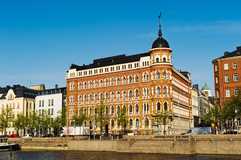Top 25 liveable cities / Global
The liveable cities index 2011
For our Quality-of-Life issue, Monocle has been busy researching the world’s top cities. And with a re-jig of the way each urban centre is assessed, this year’s top 25 promises some surprises.
For this fifth edition of our global quality of life survey we decided to shake up the metrics. It’s not that we wanted to knock a couple of cities out of the top 25 or be difficult just for the sake of it – more a case of attempting to right a couple of elements that have been nagging at us since we embarked on this project in 2007.
While low crime, efficient transport, strong public services and a dash of good looks all count for a lot in our rankings, we also know that there are many other elements (non-scientific) that are important to the mix. Indeed, some of our favourite cities (London being a good example) don’t make the grade because they fall down in a number of areas despite the fact they have a natural swagger (Rome), a naughty edge (Seoul) or a nocturnal disposition (Buenos Aires).
This year the lure of these flawed but brilliant urban hives (see Expo, pages 211-249) has helped shake up the rankings for our top 25 liveable cities. As we sat down for our annual pow-wow to rank the cities we decided it was time for a new strategy, focused not only on the nuts and bolts of a city, but also on the end product: loveability, not just liveability.
For 2011, we have approached the rating of our cities with three things in mind. First off, opportunity. Cities everywhere are feeling the pinch, but that’s no excuse. Madrid has spent its euros doing everything it can to sort its traffic problems and improve the structure of the city – and is reaping the benefits. Similarly, cash-strapped Lisbon isn’t moping: it is encouraging small-scale retail ventures and has a courageous electric vehicle project. Great things can occur when councils get imaginative with budget strategies.
Then we considered each city’s 24-hour metabolism for quality of life. Try buying your groceries in Munich, last year’s winner, after 20.00. Convenience is surely a fundamental right in any decent city. The final test was the fine balance between old-fashioned preservation and forward-thinking planning. Plenty of our favourite cities have slipped this year (Stockholm, Paris) for still being too slow when it comes to imaginative projects. Cities can change – and quickly. The best mayors, urban planners and residents embrace this fact.
This, more than anything, has led to the re-jig of our top 10 deck. High-climbers include Melbourne, which is tackling its crime problem; and Berlin, which still feels like a city where you can start a business with ease.
Then there is our winner. An unorthodox but well-deserving champion: a city that stands out for its fundamental courage to rethink its urban ambitions, and one which has all the talent, ideas and the balls to pull it off.
01 Helsinki
2010 ranking: 05 | 2009 ranking: 05
“Medium misery is the highest level of Finnish happiness that you can hope for,” wrote Finnish architect Vesa Honkonen. The fact that Helsinki has cracked our number one slot probably won’t eke much of a smile out of our Finnish friends, but they certainly have enough to be happy about: Helsinki is on a roll.
Crime is low, unemployment rates sound, the education system world-class and the city’s food culture is thriving. Entrepreneurship and innovation is present in a young, skilled and technically proficient business culture. And the city’s hardware generally manages to perform like a dream. Despite metres of snow and temperatures falling to -25C, Helsinki Vantaa airport has only shut down for half an hour in the past eight years.
Next year, the city will become World Design Capital. That’s reason enough to celebrate, although most Finns are still busy revelling in Team Finland becoming world ice hockey champions for the first time since 1995, trouncing arch rivals Sweden 6-1 in May’s final. The win was commemorated by delirious naked Finns jumping into the chilly Esplanadi fountains throughout the night.
You see, it takes more than ice-cold water to scare this lot. The Finns are a stoic bunch and Helsinki is the gutsy epicentre of the nation’s verve. What other country would dare set itself the goal of making the water in all of its lakes one day drinkable? What other city would dare move not one but two entire ports eastwards, freeing up almost an additional third of its centre?
Three years ago, work began on shifting 2.5 sq km of cargo port to the suburb of Vuosaari. While several new districts have been, or will be, created by this smart strategic move, Jätkäsaari is the headline area, built on the idea of mixed-use neighbourhoods combining commercial, residential and retail spaces, linked through sustainable infrastructure. Modestly proactive, the “Daughter of the Baltic” is possibly the only city in the western world genuinely trying to change itself. “It’s an extreme change in our urban structure,” says Mayor Jussi Pajunen. “It is building towards the sea and the archipelago, but in a way that is sustainable, based around public transport and new building projects like the Low2No mixed-use block in the Jätkäsaari area.”
What other city has enough money in the kitty to take on such a task? Among Eurozone economies, Finland has accelerated strongly out of the global financial crisis, alongside Germany and the Netherlands, with high GDP per capita and low public debt. But it’s not just the economy, it’s also the very fabric of the city that makes it ripe for renewal.
“Helsinki urbanised relatively late compared to other European cities – and Jätkäsaari and Kalasatama indicate a form of ongoing urbanisation,” says local architect Martti Kalliala from his firm in the Töölö neighbourhood of the city. “In terms of new built volume in the city, over the next 20 to 30 years, it’s quite exceptional. It’s a good place to be an architect.”
With flashes of Alvar Aalto on nearly every corner, Helsinki has always been careful to foster a good working climate for its creatives, and the city’s architecture and design scene remains extremely strong by international standards, with Kalliala and other small architectural practices like ALA and NOW doing fascinating work. “There are distinct advantages to Helsinki, such as the healthy competition culture, which is a good viable avenue to establishing yourself as a young architect,” Kalliala says.
Yet as strong as the local design culture is, it could also benefit from some foreign influence. The gleaming Kiasma Museum of Contemporary Art, designed by Steven Holl, is still the only significant building by a non-Finnish architect in the entire country. A proposal for a hotel at South Harbour by Swiss firm Herzog & de Meuron was cancelled by the local government last year.
This wasn’t much of a surprise. With a language largely impenetrable to non-Finns and an intimidating climate, Helsinki is hardly the most immediately inviting of cities – only 7.6 per cent of the city’s population is non-Finnish. Yet Helsinki has found itself as an important hinge between Europe and the east, as the nation makes the most of its short flight times to Asia with a slew of new routes, as well as a quick new rail link to St Petersburg.
But there should be more to Helsinki than a mere transport hub. The city had record visitor numbers last year, with over 3 million staying overnight. The challenge will be to ignore the potential folly of an “aerotropolis” strategy – in which visitors would barely leave the airport hotel en route to Shanghai – and lure them instead into the city.
And there is plenty to stick around for, not least Helsinki’s food revolution. After years of basic fare, the city is now home to an increasingly top notch set of small bars, coffee shops and smart restaurants that were simply not there a few years ago. The so-called New Nordic Cuisine is finding fresh appreciation for local produce, led by mushroom- and berry-friendly delis, cafés and stores like Eat & Joy, Juuri and SIS Deli+Café. The city even has its own project manager for its food culture strategy, Ville Relander, previously the owner of the Anton & Anton organic grocery store in Töölö. He’s also set himself a mission for the greater good.
“We serve tens of thousands of meals every day, through our public kindergarten system, and we have an aspiration for half of this food to be organic by 2015,” says Relander. “Maybe we calculate a bit too much,” he continues wryly.
Helsinki is a hoop-jumping city of problem-solvers; Helsinkians relish nothing more than a challenge. Despite that, you are unlikely to meet a more laconic or modest horde. Hidden up at the top of Europe, they tend to keep their successes to themselves. Monocle feels that it’s time Helsinki – the secret city – is secret no more.
02 Zürich
2010 ranking: 03 | 2009 ranking: 01
It’s onwards, upwards and right on time in Switzerland’s largest city
The Prime Tower, Zürich’s new 126m-high landmark building, has not only given the skyline of the thriving Swiss city an overhaul, it also represents a fresh commitment by the city’s powers to higher rise architecture.
Rocketing prices for offices and housing have forced Zürich to rethink urban planning. Whether the 6,600 sq m of newly created office space will actually have an impact on rents remains to be seen. In every other department, however, the council has done a good job. Crime rates for robbery are down by 23 per cent, unemployment is 0.5 per cent lower than last year, there are more doctors per citizen and transport still runs like a Swiss clock, even with the brave redevelopment of the main station.
Population: 385,468; greater metropolitan area, approximately 2 million.
International flights: 179 destinations, of which 58 are intercontinental.
Medical care: 410 citizens per doctor (nationwide 489), down from 437 the previous year, although care costs rose by an average of 10 per cent in 2010.
Temperatures: average high in July, 22.9C; average low in January, -2.8C.
Tolerance: Zürich’s first gay mayor Corine Mauch was elected in 2009.
Public transport: price of cheapest tram and bus ticket, CHF2.50 (€2).
Electric car charging points: 16.
Culture: in 2010, Zürich city invested CHF19.4m (€15.8m) in the Kunsthaus museum, Schauspielhaus theatre and Tonhalle concert hall alone.
Environmental issues: 43 per cent of domestic refuse is recycled.
How easy is it to start a business? For Swiss citizens it takes two days; EU citizens up to 14 days; non-EU up to four weeks.
Unemployment rate: 3.6 per cent.
Chain test: H&M 11; Starbucks 16.
Key upcoming developments: the ongoing redevelopment of the area beneath and around the central station.
Monocle fixes: improve traffic flow in the city centre; the area along the Sihl river is crying out for development.
03 Copenhagen
2010 ranking: 02 | 2009 ranking: 02
A waterside city with a mission – and all the materials to make it
Copenhagen’s sustainable solutions are no short-term PR puffery. The city is aiming to be carbon-neutral by 2025 and there are two reasons we are confident it will succeed. The first has to do with its progressive, youthful inhabitants. These are enlightened city dwellers for whom a bicycle is the default choice of transport and organic produce the first choice in the supermarket. Copenhageners are connoisseurs of quality, in all things, be it furniture, food or urban planning.
The second reason we have faith is that, typically for this most mercantile of Nordic nations, Copenhageners know full well that if their city becomes the world’s “green laboratory” for sustainable urban solutions, growth and wealth will surely follow.
Population: 539,542; greater metropolitan area, approximately 1.2 million.
International flights: 134 destinations, of which 22 are intercontinental.
Crime: murders, 12 (not including ‘The Killing’); domestic break-ins, 4,626.
Medical care: based on a principle of free and equal access for all citizens: 85 percent of healthcare expenses are financed by public funds.
Sunshine: annual average, 1,539 hours.
Temperatures: average high in July, 19.6C; average low in January, -0.2C.
Tolerance: the city aims to be the most inclusive in Europe with its new integration policy called “Engage in CPH”.
Public transport: 55 per cent of Copenhageners commute by bike every day.
Architecture: Sydhavn, the city’s southern harbour, is being transformed into a 4.1 sq km neighbourhood with homes for 3,500.
Electric car charging points: 21.
Unemployment rate: 8.1 per cent (higher than Danish average of 6.5 per cent, though a 4.8 percent reduction on last year).
Chain test: H&M 8; Starbucks 2.
Key upcoming developments: a new 15km high-speed line will link Østerbro, Nørrebro and Vesterbro to the city centre, due for completion by 2018.
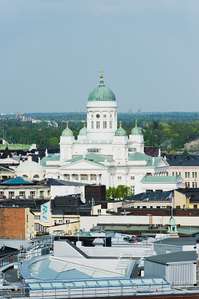

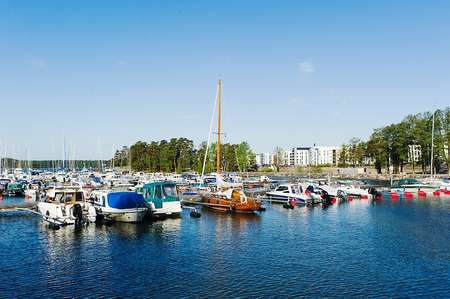

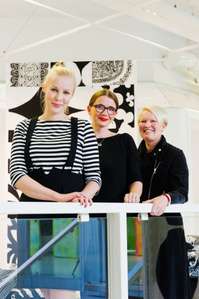
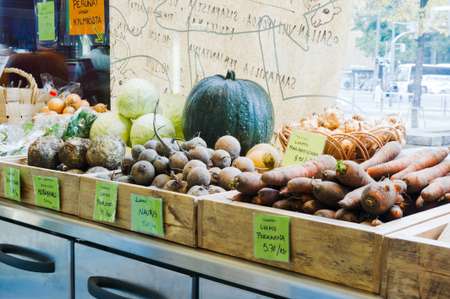
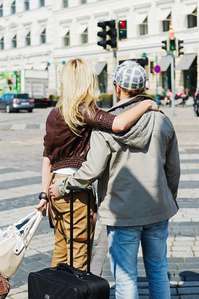
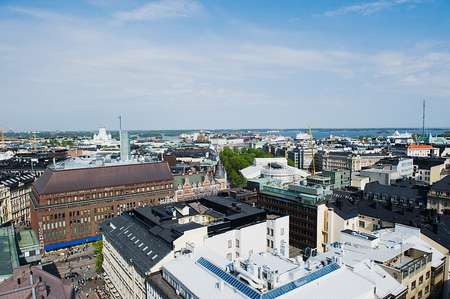
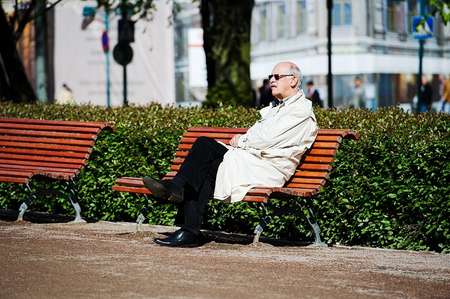
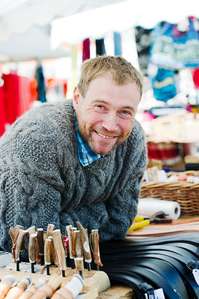
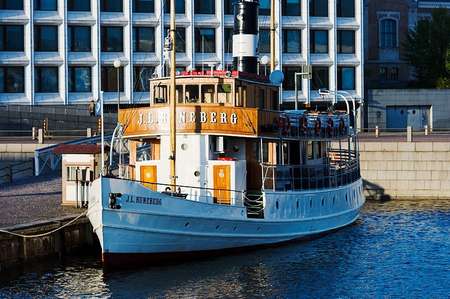
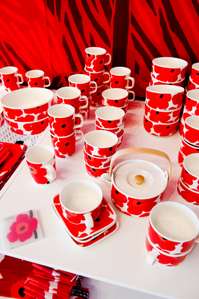
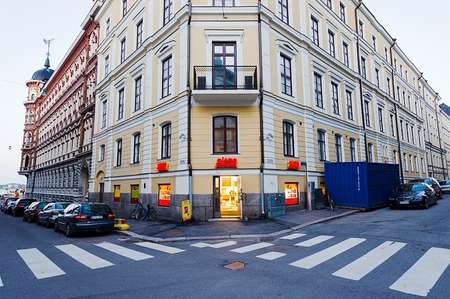
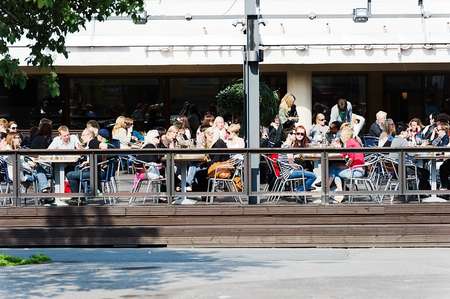
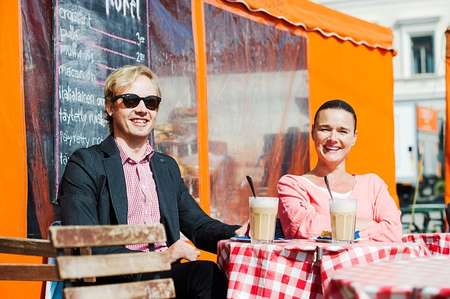
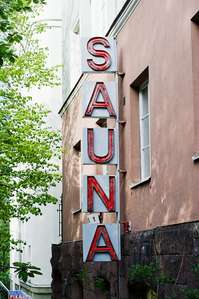
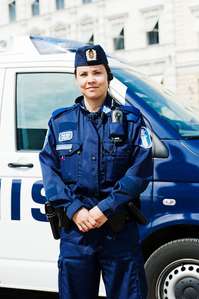

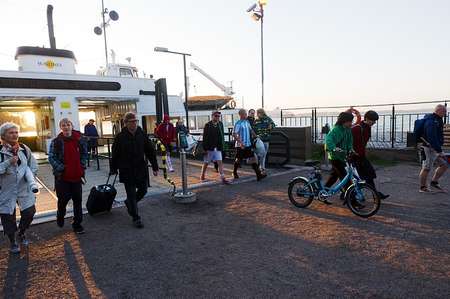
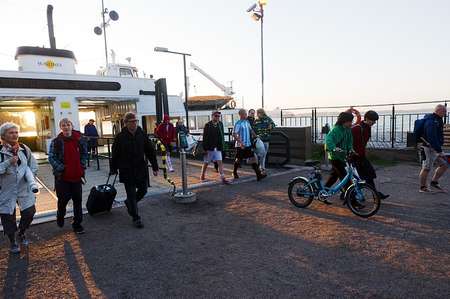
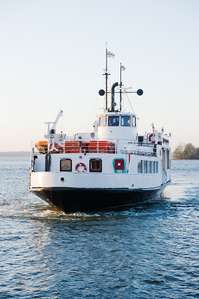
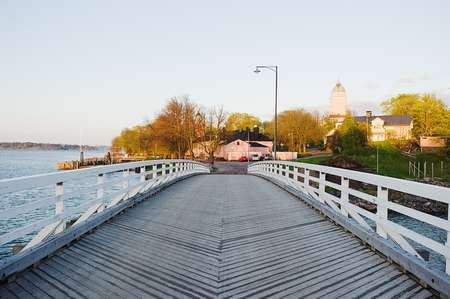
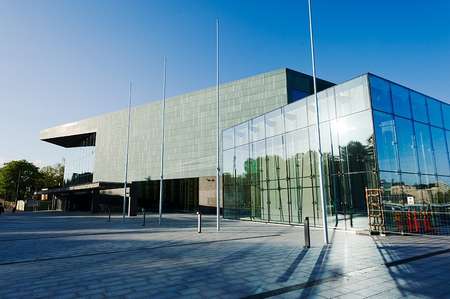
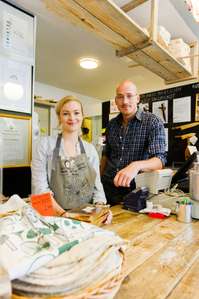

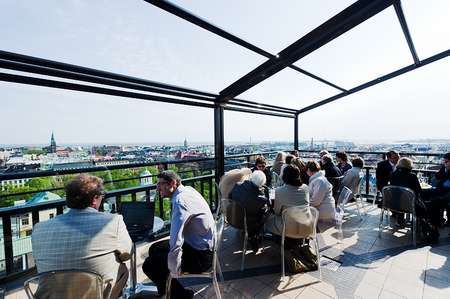
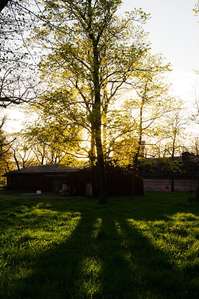
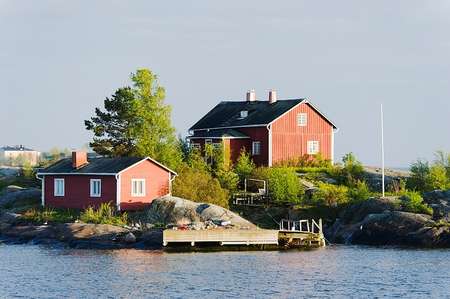
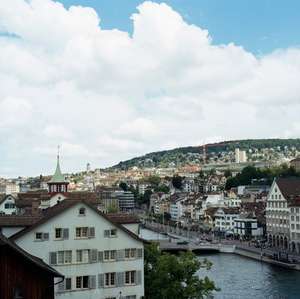

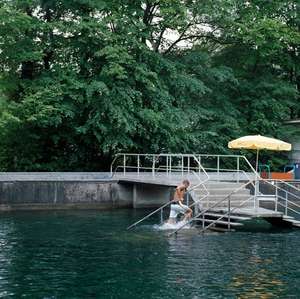
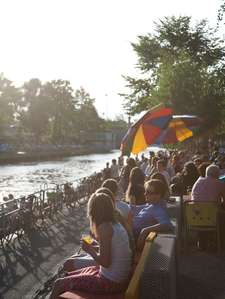
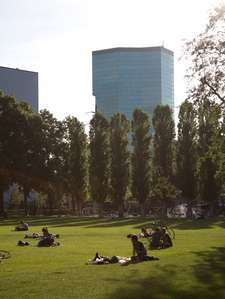

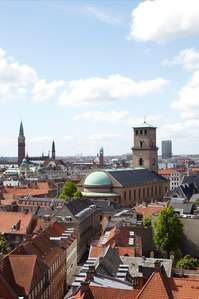
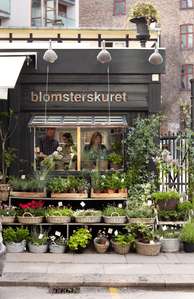
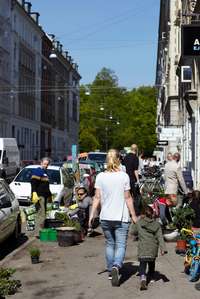
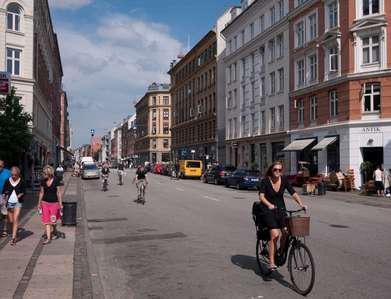
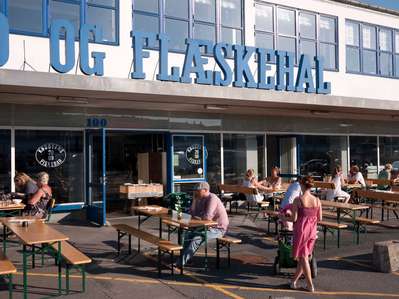
Monocle fixes: cheaper public transport.
04 Munich
2010 ranking: 01 | 2009 ranking: 04
Business as usual in the Bavarian capital. Well, almost Conservative yet progressive Munich is busily tidying itself up and crossing its fingers as it bids for the Olympic Winter Games 2018. Germany’s third biggest city has a fair chance: the public transport system, largely built for the Olympic Games in 1972, is still considered one of the best in the world. The economy is flourishing in and around the capital of Bavaria, unemployment is significantly lower than in the rest of Germany, and the enviable work-life balance is backdropped by the jolly beer gardens, famous Viktualienmarkt and summer swims in the river Isar. The only bad news this year: Munich’s remarkably successful football club Bayern will not be the champions. Hosting the Winter Olympics may be some consolation.
Population: 1,387,551; greater metropolitan area, 5.48 million.
International flights: 57 intercontinental.
Crime: murders, 10; domestic break-ins, 798 (down from 954 last year).
State education: 65 per cent of 20 to 29-year-olds in Munich either have a general qualification for university entrance or a vocational diploma.
Sunshine: annual average, 1,618 hours.
Temperatures: average high in July/August, 17C; average low in January, -2C.
Drinking and shopping: Munich is still subject to Bavaria’s dated opening hours, meaning supermarkets close at 20.00.
Cycling: 14 per cent of commuters cycle to work.
Electric car charging points: 41.
Culture: Munich’s museums attracted 190,000 visitors in February 2011 alone.
Green space: 35 sq m per person.
How easy is it to start a business? The number of new businesses rose 2.1 per cent in Munich last year to 19,033.
Unemployment rate: 5.5 per cent.
Chain test: H&M, 11; Starbucks, 10.
Key upcoming developments: the planning approval procedure for a third runway for Munich’s airport is due to end in 2011.
Monocle fixes: cheaper rent – the city has some of the highest rates in Germany.
05 Melbourne
2010 ranking: 09 | 2009 ranking: 09
Massive growth puts Melbourne on course to be Australia’s biggest city
Melbourne is growing. In the west of the city, a flurry of construction is taking place across 2 sq km in the Docklands area which is set to transform the city. This is not a new project – it started in 1997 – but as its 2020 completion date draws closer, the former industrial wasteland is quickly taking shape as a legitimate suburb. As well as dining, shopping, sport and commercial venues, the Docklands will include 3,400 residences, providing homes for a projected 17,000 people by 2020.
New houses are springing up everywhere in the city, with Melbourne building them at twice the rate of Sydney. The capital of Victoria is on course to become the country’s biggest city by 2037; how it handles such a transition will be fascinating to watch.
Population: city centre, 96,550; greater metropolitan area, 4 million.
International flights: 29 destinations, of which 22 are intercontinental.
Crime: murders, 22; domestic break-ins, 4,070 (down for three consecutive years).
Medical care: there are calls for new hospitals in the city’s north and west to cope with a soaring – and ageing – population.
Sunshine: annual average, 2,263 hours.
Drinking and shopping: a freeze on late-night alcohol licences in Melbourne means that no new ones will be granted for bars to stay open beyond 01.00 until at least June 2013.
Cycling: 1.6 per cent of commuters cycle to work.
Green space: 46.1 sq m per person.
How easy is it to start a business? It takes two days to register a business.
Unemployment rate: 5 per cent.
Chain test: H&M, 0; Starbucks, 5.
Key upcoming developments: Swanston Street – a major thoroughfare in the centre of the city – will have new public spaces, increased tram-stop access, a bike lane and improved street lighting and furniture by the end of 2012.
Monocle fixes: introduce a version of London’s “the Knowledge” to deal with reports that suggest more and more taxi drivers in Melbourne don’t know the city.
06 Vienna
2010 ranking: 08 | 2009 ranking: 07
Continues to move beyond its status as a beautiful outdoor museum
Urban renewal programmes abound in Vienna: a new hi-tech central train station is due for completion in 2015, acting as an anchor for a new neighbourhood with housing for 13,000 people. Additionally, the second district, a large island in the Danube is morphing from bohemian enclave to bona fide destination with its new Jean Nouvel-designed Hotel Sofitel (opened in December 2010) and a newly built business university due to open in 2012-13.
As always in Austria, culture is writ large. New events such as Vienna Design Week (launched in 2007) or Vienna fashion week (launched in 2009) have already established themselves alongside the traditional opera and theatre venues with the city’s support.
Population: 1.7 million; greater metropolitan area, 3.54 million.
International flights: 171 destinations, of which 32 are intercontinental.
Crime: murders, 18; domestic break-ins, 5,072. Muggings are down 34.6 per cent.
Sunshine: annual average, 1,875 hours.
Temperatures: average high in July, 22C; average low in January, -0.2C.
Tolerance: gay marriage has been recognised in Austria since 2010.
Drinking and shopping: grocery shopping on Sunday mornings is impossible.
Public transport: with 118 bus, train and tram lines and 4,360 stops, Vienna has an excellent public transport system that is being improved year by year.
Electric car charging points: 22, plus numerous points for electric bicycles.
Architecture: in 2010 the city completed its 10-year “50-Orte-Programm” in which 50 locations were made friendlier to pedestrians with benches, trees and new car-free zones.
Unemployment rate: 8.6 per cent.
Chain test: H&M, 18; Starbucks, 11.
Key upcoming developments: Vienna is planning a huge suburb called Seestadt Aspern, located between the city and its Slovak neighbour to the east, Bratislava.
Monocle fixes: address Sunday retail opening hours.
07 Sydney
2010 ranking: 12 | 2009 ranking: 13
Retail rebirth is not helped by an outdated transport infrastructure
Within the past 12 months, central Sydney has been revitalised by the opening of the colossal Westfield shopping centre in the CBD. Great news for the city’s economy (though perhaps not its architectural credits), but the swelling numbers of Sydneysiders flocking to the shopping mecca exacerbates a nagging problem: the city’s creaking transport infrastructure.
Relief may soon be on its way for long-frustrated commuting Sydneysiders, however, with plans for a light rail service on the ever-clogged George Street under consideration. The city council has also pledged to spend AU$180m (€134m) on sprucing up the area. The controversial cycle scheme is also finally showing stunning results, with a 167 per cent increase in people cycling in the CBD.
Population: 177,000 city centre; greater metropolitan area, 4.4 million. International flights: 52 destinations, of which 40 are intercontinental.
Crime: murders, 43; domestic break-ins, 23,523 both down from last year).
State education: Sydney’s university attendance rate (32.4 per cent) is higher than the national average of 28.9 per cent.
Sunshine: annual average, 2,519 hours.
Temperatures: average low in July, 8.7C; average high in January, 26.5C.
Drinking and shopping: it’s possible to shop for groceries from 06.00 on Sunday morning, should the mood take you.
Electric car charging points: 1.
Culture: the Imax Theatre Sydney houses the world’s largest cinema screen, covering an area of more than 1,015 sq m.
Green space: 21.4 sq m per person.
Unemployment rate: 4.8 per cent.
How easy is it to start a business? It takes two days to start a business.
Chain test: H&M, 0; Starbucks, 9.
Key upcoming developments: plans are in place to create a city farm in Sydney, which will be home to food outlets, art projects and educational facilities.
Monocle fixes: a recent report showed that 56 per cent of recorded assaults in Sydney occurred within 50m of a pub, club or off-licence. Time to review licensing laws?
08 Berlin
2010 ranking: 11 | 2009 ranking: 10
Berlin continues to fascinate as it transforms in to a world-class city
History around every corner, diverse architecture, a vibrant nightlife and charming rough and empty spaces: nine million tourists visited Germany’s capital last year. With barely any industry left and high unemployment, tourism is Berlin’s most important economic crutch. Despite that, locals in districts such as Kreuzberg are increasingly resentful at the overwhelming number of tourists crowding the streets and the number of apartments rented as holiday flats.
But Berliners are used to taking things into their own hands. Formerly less attractive districts such as Neukölln and Schöneberg, where living is still cheap, have become the new hotspots, seeing many cafés, restaurants and galleries open over the past two years.
Population: 3,450,900.
International flights: 171 destinations, of which 44 are intercontinental
Crime: murders, 11; domestic break-ins, 8,713, both down on last year.
Sunshine: annual average, 1,436.5 hours.
Temperatures: average high in July, 18C; average low in January, -1C.
Public transport: price of cheapest subway ticket, €1.40.
Medical care: Berlin’s Charité is considered to be Europe's largest hospital.
Electric car charging points: 90.
Environmental issues: the low air quality in Germany’s capital has improved since the inauguration of the “Umweltzone” in 2008, a low-emission zone that keeps older cars and other “dirtwhirls” out of the city.
Culture: more than 450 galleries, with Schöneberg becoming the new hub.
Unemployment rate: 13.9 per cent.
Green space: 29.45 sq m of recreational space per person.
Chain test: H&M, 28; Starbucks, 19.
Key upcoming developments: with a victory for the Greens in September the city might get its first female mayor.
Monocle fix: with disproportionately high unemployment and almost no industry: Berlin lacks jobs. After several incidents of severe violence in public spaces, security is also an issue.
09 Tokyo
2010 ranking: 04 | 2009 ranking: 03
An exceptionally challenging year for one of our favourite cities
No sooner had Tokyo started to see signs of economic recovery than the country was hit on 11 March by an unprecedented natural and nuclear catastrophe. As foreign residents departed and tourists kept clear, the city took on a new character. Looking for stability in the midst of uncertainty, the electorate gave 78-year-old Governor Shintaro Ishihara a fourth term.
We salute Tokyo for its remarkable forbearance in difficult times and for its unchanging brilliance: Tokyo’s food, shopping and hospitality are as exceptional as ever. But residents face a difficult future: the economic consequences of the disaster are still unfolding and it remains to be seen how the power restrictions predicted during the hot summer months will affect the capital.
Population: 8.96 million; greater metropolitan area, 13 million.
International flights: 57 intercontinental destinations, with seven from the new international terminal at Haneda airport.
Crime: murders, 93; domestic break-ins, 6,898 in greater Tokyo.
Sunshine: 1,987 hours in 2010.
Temperatures: average low in January, 3C; average high in July, 33.5C.
Public transport: price of cheapest subway ticket, €1.39; bus, €1.73.
Electric car charging points: 37.
Emergency services: average ambulance response time, 6 minutes 18 seconds; police, 5 minutes 37 seconds.
Green space: 100 sq m per person (Greater Tokyo).
Environmental issues: 24 per cent of rubbish was recycled, excluding business refuse from offices or stores.
How easy is it to start a business? It takes about one week to register at Tokyo Legal Affairs Bureau.
Chain test: H&M, 5; Starbucks, 262 (up from 217 last year).
Key upcoming developments: full renovations to Tokyo station continue, with a 150-room hotel and gallery to be reinstated. Work is scheduled to finish in 2013.
Monocle fixes: the Sumida river could be turned into more of an asset to the city.
10 Madrid
2010 ranking: 10 | 2009 ranking: 12
A transformed city ready to face the future, but at what cost?
Many doubted the seemingly limitless ambitions of recently re-elected Madrid mayor Alberto Ruiz-Gallardón but his major projects are finally complete, and Madrileños have plenty to be happy about. The Madrid Río project has seen traffic from the city’s M30 ring road banished underground, replaced by a series of parks, cycle paths, skate ramps and playgrounds, and major shopping areas such as the Plaza de Callao have been pedestrianised.
It’s not all good news though, given that the city’s money well has run dry. The air quality in the capital is a serious issue, with the level of toxic particles regularly exceeding EU limits. The council needs to do something about traffic levels fast, while also encouraging locals to leave their cars at home and get on their bikes.
Population: 3,273,049; greater metropolitan area, 5.6 million.
International flights: 198 destinations, of which 69 are long-haul.
Crime: murders in the Madrid region fell 20.3 per cent from 2009 to 2010, from 59 cases to 47.
State education: Madrid is throwing its weight behind the idea of bilingual education (English/Spanish), with 276 bilingual primary schools in the region.
Sunshine: annual average, 2,769 hours.
Tolerance: a gay capital of Europe.
Drinking and shopping: most bars serve drinks until 03.00. Nightclubs tend to close around 06.00.
Public transport: price of cheapest subway and bus ticket, €1.
Electric car charging points: 257.
Environmental issues: Madrid’s EMT public transport company is investing €51m in a fleet of 165 buses for 2012, 23 of which will be hybrid (gas/electric).
Unemployment rate: 15 per cent (Madrid region).
Chain test: H&M, 17; Starbucks, 27.
Key upcoming developments: the Chamartín urban regeneration project in the north of the city has finally got the green light after years of delays.
Monocle fix: tackle the problem of pollution with traffic-calming measures.
11 Stockholm
2010 ranking: 06 | 2009 ranking: 06
It’s good to be green, but architects would benefit from more freedom
Stockholmers continue to get value for money from their city: cultural offerings are good, the restaurants and nightlife world class. As the biggest city in the Scandinavian region, it is home to many global companies. Still, its relatively small size means that everything is reachable within 30 minutes – even untouched nature.
Stockholm is good at being green, but architecturally there are increasing concerns that many major projects are watered down by a political process where environmental interests have to be met. This year, new plans have been presented for the Slussen docks (Foster + Partners and Berg) and the Stockholmsporten gateway (BIG). Let’s hope the future architecture is of the sustainable kind, both for the eye and the environment.
Population: 847,073 city; greater metropolitan area, 2 million.
International flights: 144 international, just 18 intercontinental.
Crime: murders, 17; domestic break-ins, 2,805.
Medical care: the state provides a national healthcare system, paid from tax, to a great many, but patients also pay a small fee when visiting a doctor or a hospital.
Sunshine: annual average, 1,881 hours.
Temperatures: average low in February, -3C; average high in July, 17.2C.
Electric car charging points: 83.
Public transport: price of cheapest subway and bus ticket, €3.34; 33 per cent of commuters cycle to work.
Access to nature: more than 90 per cent of the population lives within 300m of a green area. The city has over 20 official beaches, 1,000 parks, and seven nature reserves.
Emergency services: heavily criticised recently following the death of a man whose emergency call was not taken seriously and no ambulance was sent. Environmental issues: 23 per cent of domestic rubbish is recycled.
Chain test: H&M, 35; Starbucks, 1.
Key upcoming developments: ongoing redevelopment of the Royal Seaport.
Monocle fixes: cheaper public transport.
12 Paris
2010 ranking: 07 | 2009 ranking: 08
The French capital finally learns that innovation is not a dirty word
With its fabled past, people tend to underestimate Paris as a city of the future. The much poo-pooed notion of a Greater Paris, linking the sparkling centre to the prodigal suburbs, is finally on the right track. The delivery date for a 130km super-metro, spun in a figure-of-eight around Paris and the outlying districts, has been set for 2025. Though he may not be in office to see the first rail set, President Nicolas Sarkozy deserves some of the credit, as does Paris’s long-serving mayor Bertrand Delanoë. First with the much-imitated but never-bettered bicycle service Vélib, now Delanoë and his team have come up with Autolib – Europe’s first city-run electric car hire service, starting in October. Expect plenty of foreign fact-finding missions.
Population: 2.2 million; greater metropolitan area, 11.7 million.
International flights: 310 destinations.
Medical care: excellent and free but increasingly unwelcoming to expats: EU citizens cannot join the French healthcare system until they have either reached state retirement age or have lived in France for at least five years.
Sunshine: annual average, 1,679 hours.
Tolerance: traditionally a bastion of gay rights, France has begun to lag behind other European countries in its refusal to introduce same-sex marriages.
Public transport: price of cheapest subway and bus ticket, €1.70.
Architecture: low-lying Paris will become home to a rare skyscraper in 2017, designed by Herzog & de Meuron.
Green space: 11.3 sq m per person.
How easy is it to start a business? It takes five steps and roughly seven days.
Unemployment rate: 8.9 per cent, compared with 9.2 per cent in the rest of France.
Chain test: H&M, 11; Starbucks, 35.
Key upcoming developments: work is about to start on a refurbishment of Les Halles shopping district.
Monocle fixes: the city needs an all-night metro service; plans need drawing up for fewer cars in central Paris; and fewer apartments standing empty.
13 Auckland
2010 ranking: 20 | 2009 ranking: 20
A unified council and a new start for the Rugby World Cup host
Aucklanders live in exciting times. Last year, the city embarked upon a giant experiment, abolishing seven councils and establishing the largest unified council in the southern hemisphere, with assets of NZ$39bn. In November, mayor Len Brown united the left, liberal and Pacific communities of the city to win a landslide victory, promising to make Auckland the world’s most liveable city in the process.
The city is tarting itself up ahead of the Rugby World Cup in September – millions have been spent upgrading precincts around the CBD, while two new waterfront areas – Britomart and Wynyard Quarter – are being redeveloped with upscale restaurants and public spaces. Auckland’s time is now – Mayor Brown and his council must be bold.
Population: 440,800 in the central zone; greater metropolitan area, 1,462,000.
International flights: 37 destinations, of which 24 are intercontinental.
Crime: murders, 18; domestic break-ins, 16,433.
Sunshine: annual average, 2,060 hours.
Education: in 2009, 37 per cent of school leavers in Auckland had achieved university entrance standard or higher; that’s up from 20 per cent in 2005.
Tolerance: nearly one in five Aucklanders were not born in New Zealand.
Drinking and shopping: licences until 03.00 are very common; most areas now have weekend farmers’ markets.
Public transport: usage is up by 8.4 per cent year-on-year as services improve.
Culture: Auckland Art Gallery opens in August after a multi-year, $121m (€67m) redevelopment.
Emergency services: median police response time, 9 minutes and 12 seconds; ambulance, 8 minutes, 59 seconds.
Green space: 594 sq m per person.
Chain test: H&M, 0; Starbucks, 19.
Key upcoming developments: the new Viaduct Events Centre is nearing completion – Auckland Art Fair and NZ Fashion Week will be held here.
Monocle fixes: tax breaks for well-designed flats for first-time buyers.
14 Barcelona
2010 ranking: 17 | 2009 ranking: 15
More connected than ever, but still in need of a spring clean
The news has been good in Barcelona of late, with the city’s El Prat airport opening new routes to São Paulo and Miami last March. The airport has now raised its non-European destinations by 75 per cent, offsetting the inevitable fall in demand for flights to Madrid, prompted by the thriving high-speed AVE link. But the outlook for the future is unclear, due to severe cuts being imposed on spending as part of an austerity drive. That’s going to hurt the city, which could still use a proper clean-up in some of its more run-down areas, while the pickpocketing remains a bull that the council is yet to grab by the horns. Nightlife has also suffered from a crackdown on live music in small venues. For a city that thrives on tourism, that seems like a rash move.
Population: 1,619,337; greater metropolitan area, 5,012,961.
International flights: 140 destinations, of which 30 are intercontinental.
Crime: the city was unable to supply any recent or relevant crime rates.
Sunshine: annual average, 2,524 hours.
Temperatures: average high, 20c; average low, 11.1c.
Public transport: price of cheapest subway ticket, €1,45; price of cheapest bus ticket, €1.45.
Tolerance: gay marriage is legal in all of Spain, although the Popular Party has promised to reverse that law if it gets into power next year.
Unemployment rate: 19 per cent.
Electric car charging points: 184. By the end of the year the city hopes to reach 300.
Culture: over the past four years, the Barcelona council has invested €300m in culture, 10 per cent of its total spending.
Green space: 17.76 sq m per person; Barcelona has 232,153 trees.
Chain test: H&M, 11; Starbucks, 17.
Key upcoming developments: Line 9 of the Metro system is under construction, and when complete will be the longest driverless line in Europe.
Monocle fixes: a crackdown on petty crime is much needed, as is a relaxation of the restrictions on live music in smaller bars.
15 Singapore
2010 ranking: 21 | 2009 ranking: 18
A multiplying population poses challenges for Asia’s “garden city”
With an economy growing 14.5 per cent last year, Singaporeans had a good 2010. But more relaxed immigration policies have seen an influx of (mainly Chinese) migrants while a rapidly growing population means that public services are sometimes stretched. Inequality levels, one of the highest in the developed world, also mean that there is some worry about the have-nots being left behind.
However, the political climate is slowly liberalising, with little blowback in the hitherto conservative state when a political candidate was outed as being gay. Local government remains efficient, education and medical services top-notch, and crime levels are sound. Furthermore, with Changi airport, some of the world’s best beaches are just a short flight away.
Population: 5.07 million.
International flights: 200 destinations, of which 97 are intercontinental.
Crime: murders, 19; domestic break-ins, 896 (down from 1,026).
State education: public education in Singapore is generally regarded as excellent, despite taking up only 3.3 per cent of GDP.
Medical care: regarded as a popular Asian hub for medical tourism: Robert Mugabe and Burmese general Than Shwe receive medical care here.
Sunshine: annual average, 2,064 hours.
Temperatures: average high, 31C; average low, 23C.
Electric car charging points: 6.
Culture: the government will spend €207m annually up to 2015 on the arts.
Green space: 66 sq m per person, Singapore is known as the “garden city” of Asia.
Environmental issues: an average of 56 per cent of refuse is recycled.
Unemployment rate: 1.9 per cent.
Chain test: H&M, 0; Starbucks, 69.
Key upcoming developments: the first stage of a €10bn, 42km MRT line, expected to carry 500,000 passengers daily, is slated for completion in 2013.
Monocle fixes: better integration for the increasing number of migrants; fewer chains – does Singapore really need yet another Starbucks?
16 Fukuoka
2010 ranking: 14 | 2009 ranking: 16
There’s nothing marginal about one of Japan’s most cosmopolitan cities
On a map of Japan alone, Fukuoka appears to be a marginal city, perched on the top-left corner of the southern island on Kyushu. But zoom out and it is in the heart of East Asia, as handy for Seoul and Shanghai as it is for Tokyo and Osaka.
It has long been famous for its subtly spicy food and its pungent nightlife. Now, in the massive new Hakata station, it has 200 new shops and restaurants, matching anything in north and eastern Japan. From here the new north-south bullet train route connects Fukuoka with Kyushu's southern city of Kagoshima. The airport is only minutes away from the main station by subway and the city has an unusually cosmopolitan flavour, drawing visitors from the region who come to shop, eat and drink.
Population: 1.5 million.
International flights: 19 international flights from Fukuoka airport, all short-haul or mid-haul.
Crime: murders, 17; domestic break-ins, 1,177.
Medical care: Fukuoka is home to the second largest medical workforce in Japan, with 352.4 workers per 100,000 residents.
Sunshine: annual average, 1,833.1 hours.
Temperatures: average high in August, 35.2C; average low in January, 3.3C.
Electric car charging points: 39. Fukuoka city subsidises the purchase of electric cars.
Emergency services: average ambulance response time, 6 minutes 20 seconds; police, 6 minutes 8 seconds.
Environmental issues: 22.5 per cent of rubbish was recycled in 2009. It was only 15 per cent in 2002.
Unemployment rate: 6.0 per cent in Fukuoka prefecture.
Chain test: H&M, 0; Starbucks, 35.
Key upcoming developments: work on Hakata port started in 2006 and is due to finish in 2013 – the International Cargo Terminal will be completed next year.
Monocle fixes: Fukuoka residents have excellent parks – Ohori is one of the best – on their doorsteps but it would be good to make more of the city’s beachside location.
17 Hong Kong
2010 and 2009: not ranked
Poised to play an ever greater role in the world order
While business has traditionally led the city’s agenda, new investment in the cultural sphere is seeing a different kind of Hong Kong emerge. Now Asia’s art and auction hub, Hong Kong hosts the region’s biggest art fair and a HK$21.6bn (€1.97bn) government endowment will see a 40ha cultural district designed by Foster + Partners in West Kowloon.
Also in the works are a high-speed rail link to the mainland cities of Guangzhou and Shenzhen, due for completion in 2015, as well as the 26.6km, €4.3bn Hong Kong-Zhuhai-Macau bridge. Although Hong Kong is one of the most densely populated cities in the world, 67 per cent of the total land area is made up of woodland and 41 beaches are dotted around its South China Sea shores.
Population: 7,097,600.
International flights: 160 destinations.
Crime: murders 35; domestic break-ins 4,543.
Medical care: in 2011-12, the estimated recurrent expenditure on health will be $39.9bn, an increase of more than $3bn compared with 2010-11.
Sunshine: annual average, 1,709 hours.
Temperatures: average low, January 16.8C; average high, July 29.2C.
Tolerance: although the ethnic composition of the Hong Kong population is homogenous – it’s 95 per cent Chinese – the city is well-known for being a cosmopolitan and foreigner-friendly city.
Electric car charging points: over 340.
Architecture: the International Commerce Centre was completed this year, becoming Hong Kong’s tallest building, stretching up to 118 floors.
Green space: 104.4 sq m sq m per person.
Emergency services: average police response time, 4 minutes, among the fastest in Asia.
Unemployment rate: 3.6 per cent.
Chain test: H&M, 8; Starbucks, 110.
Key upcoming developments: the site of the former Kai Tak Airport will be transformed into a cruise ship terminal.
Monocle fix: sort out the pollution problem; promote independent retailing.
18 Portland
2010 ranking: 22 | 2009: not ranked
The wunderkind in the US northwest slowly learns how to get serious
At first glance, this riverside city in the rainy US northwest looks like a frivolous haven for bright young things. Look deeper, and one finds an industrious town defined by trade, sprightly local enterprise and green commitment. The port doubled its exports’ value over the past decade, while the low-key, low-priced independent restaurant, music and fashion scenes have all produced nationally significant figures in the past two years. The local university plans to build the world’s most energy-efficient high-rise by 2013, and one of the better US transit systems will add a €100m city-centre streetcar expansion and several hundred electric-vehicle charging stations this year. This spring, a landmark planning decision protected over 100,000 hectares of farmland close to the city centre.
Population: 582,130; greater metropolitan area, 2,241,841.
International flights: 5 international flights from PDX to Amsterdam, Tokyo, Vancouver, Toronto, and Calgary.
Crime: murders, 32.
State education: the Portland Public School District increased its enrolment of children from kindergarten to 12th grade by 1.3 per cent between 2008-2009, after 12 consecutive years with enrolment losses.
Sunshine: annual average, 1,953 hours.
Temperatures: average high in August, 17C; average low in January, 7.7C.
Tolerance: Portland does not permit same-sex marriages. The state of Oregon does however, have a domestic partnership bill, enacted in 2008.
Public transport: Portland’s TriMet system was ranked the best public transit system in the nation by US New and World Report in 2011.
Electric car charging points: beginning this year, Portland and five other cities in Oregon are slated to receive an initial wave of 2,500 charging stations.
Green space: 70.9 per cent.
Unemployment rate: 9.1 per cent.
Chain test: H&M, 2; Starbucks, 114.
Monocle fixes: Portland’s lack of cultural diversity is odd. Maybe recruit a Korean firm to relocate in old Chinatown?
19 Honolulu
2010 ranking: 13 | 2009 ranking: 11
Life’s more than just a beach for the United States’ island paradise With a new mayor presiding over the densely populated Honolulu, the city is set for some big changes, including a $5.5bn rail project, and new landfill and sewer maintenance projects, as well as hosting APEC this November.
Tourism and retail remain the key drivers here though, even if Waikiki beach is eroding. But it’s not just holidaymakers attracted to the scenery: despite time being called on the final season of Lost, Honolulu still ranks as a top spot for TV and film locations. Crucially, Honolulu is an increasingly interesting place to live and work, and not just tan, with the city’s burgeoning art scene and a new generation of entrepreneurs. With Honolulu’s sunshine, great coffee, mountains and rainforests, the living is easy all year round.
Population: 337,256; greater metropolitan area, 953,207 (an 8.8 per cent increase in population between 2000 and 2010).
International flights: 41 destinations, of which 18 are intercontinental.
Crime: murders, 14; domestic break-ins, 5,999.
Medical care: Hawaiian men live four years longer than the average American male; Hawaiian women live three years more than the average American woman.
Sunshine: annual average, 3,041 hours.
Temperatures: average high in August, 30.8C; average low in January, 19.3C.
Tolerance: Hawaii permits same-sex civil unions, but has not legalised same-sex marriages.
Electric car charging points: 10, with plans for 130 additional stations by 2012.
Media: last year, the city’s two newspapers unified to create the Honolulu Star-Advertiser, with a circulation of about 130,000.
Green space: 73.2 per cent.
Unemployment rate: 5.1 per cent.
Chain test: H&M, 0; Starbucks, 10.
Key upcoming developments: 20 miles of elevated light-rail is being installed in and around Honolulu at cost of $5.3bn.
Monocle fixes: the city needs to deal with its homelessness, water and rubbish problems before trying to attract more tourists.
20 Vancouver
2010 ranking: 16 | 2009 ranking: 14
Vancouver has bounced back from a shaky start to the Winter Olympics
With more rain than snow and failed animatronics at the opening ceremonies, last year’s Winter Olympics did not start off looking like such a great advertisement for Vancouver. Two weeks later though, locals had turned the event in to the global village street party it’s never been before, and the city continues to bask in its glory.
Few cities can rival Vancouver’s natural assets, nor its easy-going cosmopolitanism – half its population was born outside Canada. The city’s food scene, blessed by nearby oceans and orchards, is a global up-and-comer. Already a robust film production centre, it is also a burgeoning hub for video-game design companies.There remain many ways in which Vancouver doesn’t live up to its hype, but it’s certainly getting there.
Population: 578,041; greater metropolitan area 2.1 million.
International flights: 59 destinations.
Crime: Murders, 9; break-ins, 2,673.
State education: five public universities, including the highly ranked University of British Columbia, and the Emily Carr Art and Design University, one of the country’s best regarded art schools.
Drinking and shopping: bars serve until 03.00.
Sunshine: annual average, 1,928 hours.
Public transport: with an extensive system of trains, buses and ferries, much of it recently bolstered for the Olympics, Vancouver boasts some of the highest public transit rider rates in North America.
Environmental issues: Vancouver aims to reduce its per capita ecological footprint by 33 per cent by 2020.
How easy is it to start a business? Easy enough, but rental and property prices can be a barrier to entry.
Chain test: H&M, 2; Starbucks, 90.
Key upcoming developments: the city’s ambitious, transit-oriented Cambie Corridor Plan willintroduce mid-rise towers in a key downtown area.
Monocle fixes: how about a high-speed rail line linking the Pacific Northwest (as in Washington and Oregon)?
Helsinki metrics
Population: 588,549; greater metropolitan area, 1.35 million.
International flights: flights to over 120 destinations; 12 of which intercontinental.
Crime: murders, 5; domestic break-ins, 382 (down from 684 the previous year).
State education: in Finland, private schools are not common. Education is free all the way to university. Finnish schools have repeatedly been rated the best in the world in the OECD’s Pisa survey.
Medical care: healthcare services are financed primarily out of tax revenue.
Sunshine: annual average, 1,858 hours.
Temperatures: average low in January, -10.4C; average high in June, 21.7C.
Tolerance: same-sex marriages are not legal but registered partnerships are. The city council is female dominated with 49 women and 36 men. Only 7.6 per cent of the residents are non-Finnish. The figure is, however, increasing: up from 6.7 per cent in 2009.
Drinking and shopping: grocery shopping can be done even on Sundays but many other shops are closed then, except in the summer. Bars usually close at 01.00/02.00.
Public transport: price of cheapest subway and bus ticket is €2.50. Electric car charging points: one. The city and the local energy company Helsingin Energia are planning to set up five or six charging points later this year.
Cycling: 32 per cent of all daily trips are done by foot or cycle.
Media: the leading local newspapers Helsingin Sanomat (Finnish-language) and Huvudstadsbladet (Swedish-language) deliver quality journalism from home and abroad; business paper Kauppalehti covers the financial world. The main international news agencies such as AP, AFP and Reuters have bureaux in Helsinki. YLE is the new state-funded broadcaster.
Culture: the brand new Helsinki Music Centre will open later this year. There is a lively theatre scene with performances in Finnish and Swedish. Other major institutions: an opera house, several good orchestras and 50 libraries.
Green space: 134 sq m per person.
Emergency Services: average police response time 6.6 minutes; ambulance 9 minutes.
Environmental issues: the Helsinki Metropolitan Area is one of the cleanest metropolitan areas in Europe in terms of air quality. Residents can follow hourly updates on air quality on the Helsinki Region Environmental Services Authority’s website.
Unemployment rate: 6.6 per cent.
Chain test: H&Ms 4: Starbucks 0.
Winning ways: Helsinki’s soft touches
Minus 20 is barely a problem for Helsinki; the city is simply built for it. You will be colder in a Sydney home during the Aussie winter than a Helsinki apartment in February – guaranteed.
Where else would you find everything from door handles and telegraph pylons to litter bins dreamed up by top-drawer designers such as Hannu Kähönen and Alvar Aalto.
Within 20 minutes of leaving the city, you can find yourself alone, looking over the Baltic in your perfectly silent summer house.
The fact you can continue your night out on the way home, in one of Helsinki’s karaoke taxis, is quite simply one of the world’s most pleasurable inventions.
It’s a perfect place to raise children: daycare is inexpensive and high quality. And if you’re pushing a pram, public transport is free.
American dream
This year’s Quality of Life index sees an unprecedented number of North American cities in the top 25, with Seattle and Portland cutting it alongside regulars Honolulu, Vancouver and Montréal (all, we should point out, sloping near the bottom of our index).
Last year we tested the waters, with our researchers polling both Chicago and Minneapolis. Neither made the top 25: the former had murder rates to scare off America’s Most Wanted, while the latter may be a cultural centre rivalling Europe’s best capitals, but it’s generally so miserable in winter you’ll be glad of a half-decent gallery to cheer yourself up in.
For 2011, we have cast our net wider, taking lovability in to account alongside liveability. Besides the nominated cities above, we also rated San Francisco (despite its re-appreciation for its own craft scene, on page 131, it has yet to tackle its ingrained homelessness problem). What’s changed? What some US cities may lack in infrastructure, architecture, green credentials and cultural offerings, they can very occasionally make up for with effort (this year, Seattle’s homicide rate is the lowest it’s been since 1956 – at 19 it’s just one murder more than Vienna), European-ish urban environment (Portland’s waterside lifestyle) or sheer easy living (lifespans in sunny Honolulu are remarkably longer than the US average).

